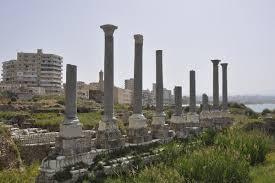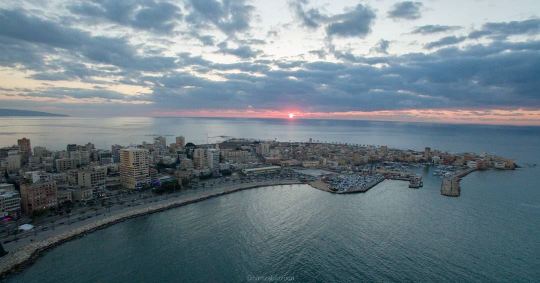#alep marble
Text

Toujours en recherche de motifs, celui-ci inspiré du marbre d'Alep.
#art#artwork#illustration#graphic art#my art#artists on tumblr#artist#digital art#digital drawing#pattern art#pattern#marbre#faux marbre#artificial marble#marble#alep#alep marble#marbre d'alep
25 notes
·
View notes
Text
D13 - Check
Two tall, feminine figures appear by a towering aetheryte surrounded by pristine marble architecture. Clad in long, hooded dark grey robes and half masks, their forms coalesce from bright lights as they emerge from the great currents of aether from within the star.
The taller of the two, a brown-haired woman, asks,
“You know, I don’t recall you starting this project.”
The shorter woman, with blonde locks finishing in nigh iridescent tips, answers.
“That’s because I started it before we met.”
The brunette gasps.
“But wouldn’t that mean-?”
“A few centuries, yes. If nothing else, mankind is gifted with time; and from my youth, I knew that this study would take a lot of it.”
“This must be quite the creation then that you’re still tending to it. What is it?”
“Nothing novel unto itself; I merely modified the creations in a non-deterministic change from their publicly published matrices.”
The brunette pauses to think.
“…but then, after all this time..?”
The pair are quickly stopped by someone at the threshold of the small building they arrived in. He waves to greet them, and gestures to their masks; as notably he wore his around his neck.
“Masks off, if you would be so kind. A safety precaution, as I’m sure you’re aware.”
The blonde nods, as the pair take off their masks; revealing the blonde’s iridescent eyes, and the brunette’s ocean blue.
The gatekeeper gestures to let them past, but asks,
“So which subjects will you be investigating this time, Miss Logos?”
“I think I’ll check in on the developments on the Alepou, Tigri, Taos, Chelona, and Fidi samples.”
((The tall one, if you can’t guess, is one of @feelingkoii ‘s again))
#ffxiv#ffxivwrite#ffxivwrite2023#ffxiv writing#kind of just a Drabble because I wanted SOMETHING to do with Elpis#care to guess what’s up with Logos’ creations?
5 notes
·
View notes
Photo

In Game:
Tyre is a city in Lebanon. During the Third Crusade, Tyre was under the control of the Crusaders and housed two of the Templars' major bases of operations: the Stronghold and the Hospital. It also had an active Assassin presence, with a carpet merchant by the name of Hamid presiding over the local Assassin bureau.
In 1190, the Assassin Altaïr Ibn-La'Ahad visited the city three times during his mission to recover the Chalice. In the first of these three visits, he infiltrated the Templar Hospital in order to kill the doctor Roland Napule and retrieve the second key to the Temple of Sand.
After his failure to find the Chalice in that temple, he returned to track down the Templar leader Basilisk as his only lead to the artifact. He scaled the great wall of the heavily reinforced Templar's Hold, infiltrated the fortress, and nearly killed Basilisk in exchange for the location of the Chalice.
When Altaïr discovered that the Chalice was his friend Adha all along, the two plotted to flee the conflict between the Assassins and Templars by sailing across the Mediterranean Sea. It was from the Tyre docks that they planned to make their escape, and Adha waited there while Altaïr assassinated the Assassin traitor Harash in Alep. By the time he arrived to reunite with Adha, she had been captured by the Templars, who had their entire army occupy the harbor. In his frantic attempt to rescue Adha, he slew Basilisk in a final duel, but was unable to save his lover, who was taken by the Templars on a ship across the sea and later murdered.
In Real Life:
Tyre (modern Arabic Ṣūr, French Tyr or Sour, Latin Tyrus, Hebrew Zor or Tsor) is a town on the Mediterranean coast of southern Lebanon. The name means 'rock' and the city consisted of two parts, the main trade center on an island, and 'old Tyre', about a half mile opposite on the mainland. The old city, known as Ushu, was founded c. 2750 BCE and the trade center grew up shortly after. In time, the island complex became more prosperous and populated than Ushu and was heavily fortified.
Tyre, built on an island and on the neighboring mainland, was probably originally founded as a colony of Sidon. Mentioned in Egyptian records of the 14th century BCE as being subject to Egypt, Tyre became independent when Egyptian influence in Phoenicia declined. It later surpassed Sidon as a trade centre, developing commercial relations with all parts of the Mediterranean world. In the 9th century BCE colonists from Tyre founded the North African city of Carthage, which later became Rome’s principal rival in the West. The town is frequently mentioned in the Bible (Old and New Testaments) as having had close ties with Israel. Hiram, king of Tyre (reigned 969–936), furnished building materials for Solomon’s Temple in Jerusalem (10th century), and Jezebel, wife of King Ahab, was the daughter of Ethbaal, “king of Tyre and Sidon.” In the 10th and 9th centuries Tyre probably enjoyed some primacy over the other cities of Phoenicia and was ruled by kings whose power was limited by a merchant oligarchy.

(Image source)
For much of the 8th and 7th centuries BCE the town was subject to Assyria, and in 585–573 it successfully withstood a prolonged siege by the Babylonian king Nebuchadrezzar II. Between 538 and 332 it was ruled by the Achaemenian kings of Persia. In this period it lost its hegemony in Phoenicia but continued to flourish. Probably the best-known episode in the history of Tyre was its resistance to the army of the Macedonian conqueror Alexander the Great, who took it after a seven-month siege in 332. He completely destroyed the mainland portion of the town and used its rubble to build an immense causeway (some 2,600 feet [800 meters] long and 600–900 feet [180–270 meters] wide) to gain access to the island section. After the town’s capture, 10,000 inhabitants were put to death, and 30,000 were sold into slavery. Alexander’s causeway, which was never removed, converted the island into a peninsula.
Tyre was subsequently under the influence of Ptolemaic Egypt and in 200 became part of the Hellenistic Seleucid kingdom. It came under Roman rule in 64 BCE and was renowned in Roman times for its textiles and for a purple dye extracted from sea snails of the genus Murex (the dye was said to be worth more than its weight in gold, and purple cloth became a symbol of wealth and of royalty). By the 2nd century CE it had a sizable Christian community, and the Christian scholar Origen was buried there (c. 254). Tyre was under Muslim rule from 638 to 1124, when it fell to the Crusaders, and until the 13th century it was a principal town of the kingdom of Jerusalem. The Holy Roman emperor Frederick I Barbarossa, who died on the Third Crusade, was buried in its 12th-century cathedral. Captured and destroyed by the Muslim Mamlūks in 1291, the town never recovered its former importance.
Excavations have uncovered remains of the Greco-Roman, Crusader, Arab, and Byzantine civilizations, but most of the remains of the Phoenician period lie beneath the present town. Areas of archaeological note include the ruins of a Crusader church, a street with a 2nd-century mosaic pavement and a double colonnade of white green-veined marble, Roman baths, the ruins of a Roman-Byzantine necropolis, and the largest Roman hippodrome ever discovered. Built in the 2nd century, the hippodrome hosted chariot races with a capacity of 20,000 spectators.

(Image source)
In 1984 UNESCO designated the historic town a World Heritage site. In the late 20th century the ruins were damaged by bombardment, most notably in 1982 and 1996 during Israeli offensives in southern Lebanon. The site is threatened by urban growth, looting, and the decay of stone because of airborne pollution. In 1998 UNESCO created a special fund for the preservation and archaeological excavation of the ancient treasures of Tyre.
The economy of the town was upset by the unrest of the late 20th century. Fishing remains a major source of income.
Sources:
https://www.ancient.eu/Tyre/
https://www.britannica.com/place/Tyre
16 notes
·
View notes